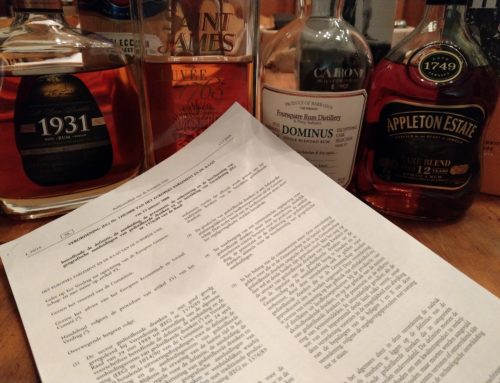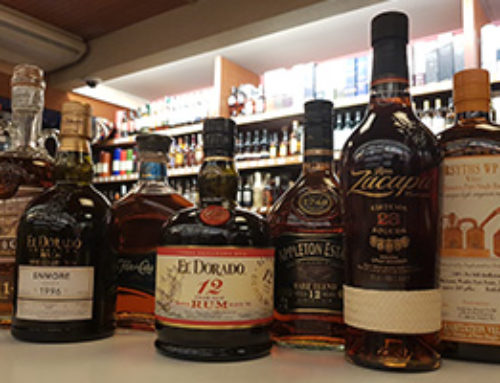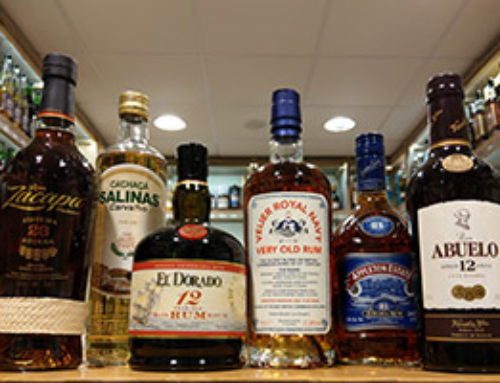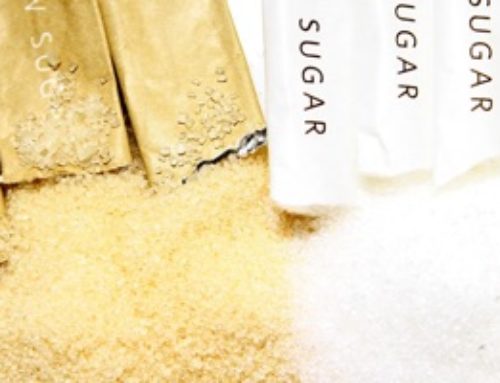All white Rum is the same!
In the first article we learned why rum isn’t sweet, despite the common belief that it is. Here, we’ll tackle the perception that all “white” rums are the same.
Flip through any cocktail book, and you’ll invariably come across a recipe specifying “white rum”. If you’re lucky, the recipe may helpfully offer something like “Virgin Islands white rum,” although which rum that specifically refers to is likely to escape the average consumer. Grabbing the nearest white rum bottle in sight seems innocuous enough. After all, isn’t white rum the lowest common denominator in the rum world? All within a few degrees of each other—like the difference between store brand and name brand ketchup.
The answer here is a resounding NO! Choosing a rum only by its color is akin to answering “white” when you’re asked what type of car you drive. Later in this series, we’ll talk about the nonsense that the darker the rum, the older it is. But white and silver rums are the topic du jour.
A typical perception of white rum is that it’s light in character without a lot of pronounced flavor. Some might even go so far as to say that white rum is interchangeable with neutral vodka. It’s also not a stretch to believe white rum is unaged, raw, and fiery.
The truth is that more than a few white rums live up to the notion that they’re bottom of the barrel—or stainless steel tank—options. And more than a few distilleries produce nearly soulless, unaged, 80-proof rums that are nearly indistinguishable from vodka. In fact, at recent rum education events, a vodka and a carefully selected white rum are placed side by side, with the drinker guessing which spirit is which. No surprise, the split is nearly 50/50—even among professional tasters.
White Rum Is Full of Flavor!
Lift your eyes from the bottom shelf, however, and you’ll find white rums bursting with flavor and personality. Just because the bottle’s contents are translucent doesn’t mean the rum within hasn’t spent years in a cask, mellowing and acquiring all sorts of delicious rummy flavors.
What differentiates these rums from their vodka-like siblings is cask aging and charcoal filtration. Filtering removes most of the color and, if done properly, removes only a bit of the flavor. The process of aging then filtering is fairly unique to rum. You won’t find equivalents in the domain of bourbon, scotch, tequila, or cognac. Yet in the rum world, the technique is a rich tradition reaching back well over a century, and practiced primarily by producers from countries with a Spanish heritage, such as Cuba. In fact, to be called Cuban rum, the freshly distilled aguardiente is required to be cask aged for at least two years and then filtered. Only then can it be called unaged rum.
A few familiar offerings of aged and filtered white rums include Bacardi Superior, Havana Club 3 Años and El Dorado 3 year. The Bacardi spends a year in oak barrels before filtration, while the others spend at least three years. The Havana Club in particular is so lightly filtered that you can easily see some color, and the cask-induced vanilla tones jump out at you.
White Rum Is Diverse!
Setting sail from the classic Spanish-style aged and filtered white rums, we come to the multi-country blends. The rum from distilleries in Jamaica, Barbados, and Guyana all carry unique flavors. Why settle for a soloist when you can have a multi-part harmony? Plantation 3 Stars blends rums from Barbados, Trinidad, and Jamaica—both unaged and long aged. And the Banks 5 Island Rum brings together distillates from Trinidad, Jamaica, Guyana, and Barbados, as well as exotic Batavia Arrack from Java. Sure, these rums cost two or three times more than your basic Puerto Rican blanco, but don’t your top-shelf cocktails warrant a premium rum?
Heading further into less charted waters of white rum, we encounter sea monsters—the Jamaican overproofs. Wray & Nephew Overproof is the best known, but brands like Rum Bar and Rum Fire are gaining traction. On the shelf they look like any other white rum. But pull the cork, and the aromas bowl you over with that legendary Jamaican “funk,” redolent with overripe bananas and other fruits. And often clocking in around 130 proof, they pack an alcoholic wallop. There’s no aging or charcoal filtering with these rums—they’re unabashedly unaged hogo bombs, a night and day difference from the genteel, refined, multi-island whites like Banks 5 Island.
Finally, no discussion of white rums is complete without considering unaged rhum agricole blanc from the French islands of Martinique, Guadeloupe, Haiti, and Marie Galante. Made from fresh-cut cane juice and usually distilled within a day of cutting, these rums are powerfully funky, albeit very different than the Jamaican overproofs. They’re grassier and more vegetal, with less ripe banana. A small squeeze of lime, a scant barspoon of sugar, and a few ounces of unaged agricole is all you need to make Ti’ Punch, the French version of a daiquiri, but oh-so-more refined.
The rum marketplace offers an incredible diversity of rums whose only characteristic in common is lack of color. If we’re lucky, the “white” and “silver” rum designations will someday vanish, replaced by better descriptors of the rum’s styles. It’s a challenge though, as even producers with great products propagate these misnomers and play it safe, labeling their products “white” or “silver” when there are much more helpful terms they could use.




